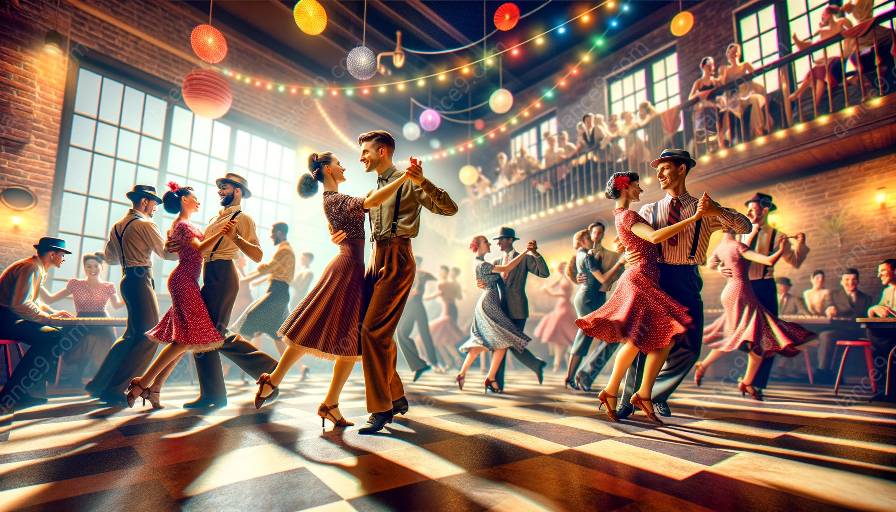Swing dance holds a significant place in the history of performing arts, with its energetic movements and infectious rhythm. This comprehensive topic cluster delves into the origins, evolution, and impact of swing dance, along with its relevance to dance classes. From its roots in the early 20th century to its enduring legacy today, the world of swing dance is a vibrant and ever-evolving art form that continues to captivate audiences.
The Origins of Swing Dance
The roots of swing dance can be traced back to the African American community in the 1920s-1930s, during the jazz age. Influenced by the syncopated rhythms of jazz music, swing dance emerged as a popular social dance form, characterized by its improvisational and lively nature. Its origins can be linked to the Harlem Renaissance, where African American culture and creativity flourished.
Swing dance reflects the spirit of jazz music and the exuberance of the times, with its emphasis on improvisation and individual expression.
The Evolution of Swing Dance
As swing music gained popularity in the 1930s and 1940s, swing dance evolved into various styles, including the Lindy Hop, Charleston, Balboa, and Jitterbug. These styles captivated dancers and audiences alike, and swing dance became a defining feature of the era's cultural landscape. The evolution of swing dance was also influenced by social and historical factors, such as World War II and the changing dynamics of American society.
Swing dance continued to evolve and adapt, reflecting the changing cultural and social dynamics of the time.
Significance of Swing Dance in Performing Arts
Swing dance holds immense significance in the performing arts as it embodies joy, freedom, and self-expression. Its infectious energy and syncopated rhythms make it a compelling form of artistic expression. In the realm of performing arts, swing dance has been featured in numerous Broadway shows, Hollywood movies, and music videos, showcasing its enduring appeal and timeless charm.
Swing dance's significance in the performing arts is evident through its presence in popular culture and its ability to captivate audiences across generations.
The Legacy of Swing Dance
The legacy of swing dance endures through dedicated dance enthusiasts, performers, and instructors who continue to preserve and promote its rich heritage. From international swing dance competitions to local dance classes, the legacy of swing dance remains vibrant and relevant, offering people of all ages the opportunity to embrace its infectious rhythms and lively movements.
Swing Dance Classes and Its Contribution
Swing dance classes play a pivotal role in sustaining the legacy of this captivating art form. These classes not only provide individuals with the opportunity to learn and master swing dance techniques but also serve as vibrant communities where enthusiasts come together to celebrate and share their love for swing dance. Through swing dance classes, individuals can learn the fundamentals, develop their own style, and immerse themselves in the joyous world of swing dance.
Swing dance classes contribute to the ongoing legacy of this art form by fostering a sense of community, fostering creativity, and passing on the tradition to future generations.
Conclusion
In conclusion, swing dance has left an indelible mark on the history of performing arts, representing the spirit of jazz music and the exuberance of its era. Its significance, evolution, and lasting legacy continue to inspire performers and enthusiasts worldwide. The world of swing dance is alive and thriving, upheld by passionate individuals and dance communities that ensure its enduring presence in the performing arts landscape.













































































